
川湘小厨
Chuanshanshouten ◆ チュアンシャンショウテン
3.03
Takadanobaba
「Chinese Cuisine」
--
--
Opening hours: 11:00-15:0017:00-23:00 Hours of operation and
Rest time: are subject to change, so please check with the store before visiting.
東京都新宿区西早稲田3-20-2 中岡ビル 1F
Photos
(20)
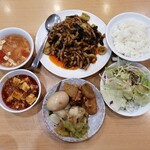

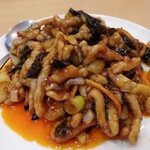
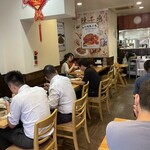
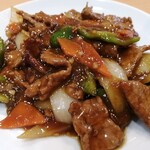
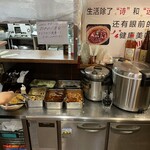
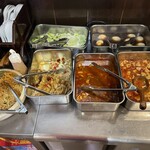
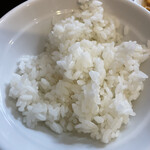
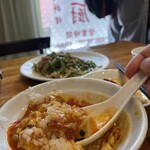
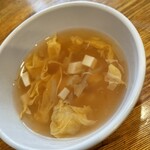
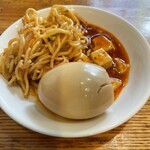



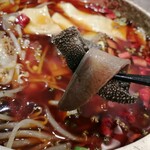
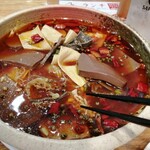
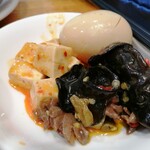
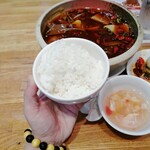

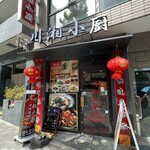
Details
Comments
(2)
かくがく
4.00
Lunch at Nishi Waseda. A new Chinese restaurant has opened in a place that used to be a Chinese restaurant before. I arrived before 1 pm and there were about 10 customers already seated and more than 10 waiting. Most of the customers were speaking Chinese. The atmosphere inside the restaurant was similar to the previous one, with about 10 tables irregularly arranged, seating up to 30 people. There were 9 lunch menu options, with Sichuan cuisine being the main focus. The most expensive dish was the Sichuan-style stew of duck blood and various vegetables priced at 1180 yen. The rest were either 880 yen or 980 yen. I chose the less common fish-flavored shredded pork. It was described as thinly sliced pork stir-fried with fish-flavored sauce, which I later found out is a home-cooked dish from Sichuan. I also ordered the classic beef with oyster sauce to share with a friend. The meal included two small side dishes, mapo tofu, boiled egg, salad, rice, and soup, all self-service, before the main dishes were served.
Fish-flavored shredded pork: Sweet and sour like sweet and sour pork, with a strong sweetness. It had a hint of black vinegar-like aroma, but the fish flavor was not distinct. The beef with oyster sauce was also slightly sweet. The mapo tofu had a Sichuan-style seasoning, despite being cold, and was good. The small side dishes were stir-fried cabbage with garlic and simmered daikon with chicken, both delicious. The boiled egg was also good. The rice was a bit dry, but considering the price was under 1000 yen and the amount of food provided, it was a great deal. (September 2023)
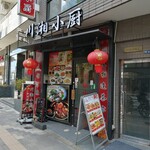

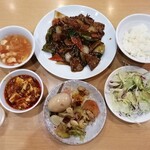

h〜o
4.10
When going from my place to Shinjuku by bicycle, I prefer to take a route that goes from Waseda Street to Meiji Street, even though it is not the shortest distance. The reason is simple. There are various delicious restaurants from different countries scattered along the route, and I like to stop and add them to my wishlist on Tabelog. Among them, the recently discovered restaurant is here. From the photos on Google Maps, it seems that the place used to be a Sichuan cuisine restaurant called "Kawaka Sakebo," but recently it has transformed into "Kawasho Shokuzo," claiming to also offer Hunan cuisine with the addition of the character "湘" (Xiang). In China, each province is abbreviated with a single character, with Sichuan being "川" and Hunan being "湘." Adding "菜" to these characters creates "川菜" (Sichuan cuisine) and "湘菜" (Hunan cuisine), representing the local cuisines of each region. By the way, Cantonese cuisine is "粤菜" and Shanghai cuisine is "沪菜." Although I have passed by this place many times before without noticing it, my brain reacted this time because of the character "湘." When I see this character, memories of various Hunan dishes come to mind, causing my mouth to water and putting me in a "Pavlov's dog" state. I checked Tabelog and Google for preparation, but there were no reviews yet, and my desire to be a guinea pig and be helpful grew, pushing aside other options for a visit. Now, even though I entered at 13:30, the restaurant was almost full. I was guided to the only available seat next to the entrance and sat down. As far as I could see, I was the only Japanese person there. After a quick look at the menu, I couldn't find any Hunan cuisine dishes. Hmm, did I enter too early? I already felt anxious. Out of a sense of duty as a guinea pig, I ordered the popular Qingjiao Rousi set meal for 880 yen, but this was also a typical Sichuan dish. Moreover, the Japanese Qingjiao Rousi is a stir-fry of green peppers and meat, different in taste and spiciness from the authentic version made with green chili peppers. After placing my order, the waitress urged me to go get rice and side dishes from over there. When I went, there was a buffet corner for side dishes, including ingredients like raw lettuce, soy sauce-marinated eggs, and mapo tofu, all seemingly available for unlimited servings. I picked up the mapo tofu and found it to be perfectly spicy, so I decided to go back for a second round and made a mapo tofu rice bowl. In the end, I made four trips back and forth before the main dish arrived. The Qingjiao Rousi was as expected, with a Japanese flavor, but with the variety of side dishes, my satisfaction meter was off the charts. I was all prepared to complain about being deceived by having the character "湘" and expecting Hunan cuisine but only getting Sichuan cuisine, but after the meal, I found myself unexpectedly grateful for encountering this restaurant thanks to the character "湘." Next time, I want to try some more unique Sichuan dishes. Thank you for the meal.




Email Login